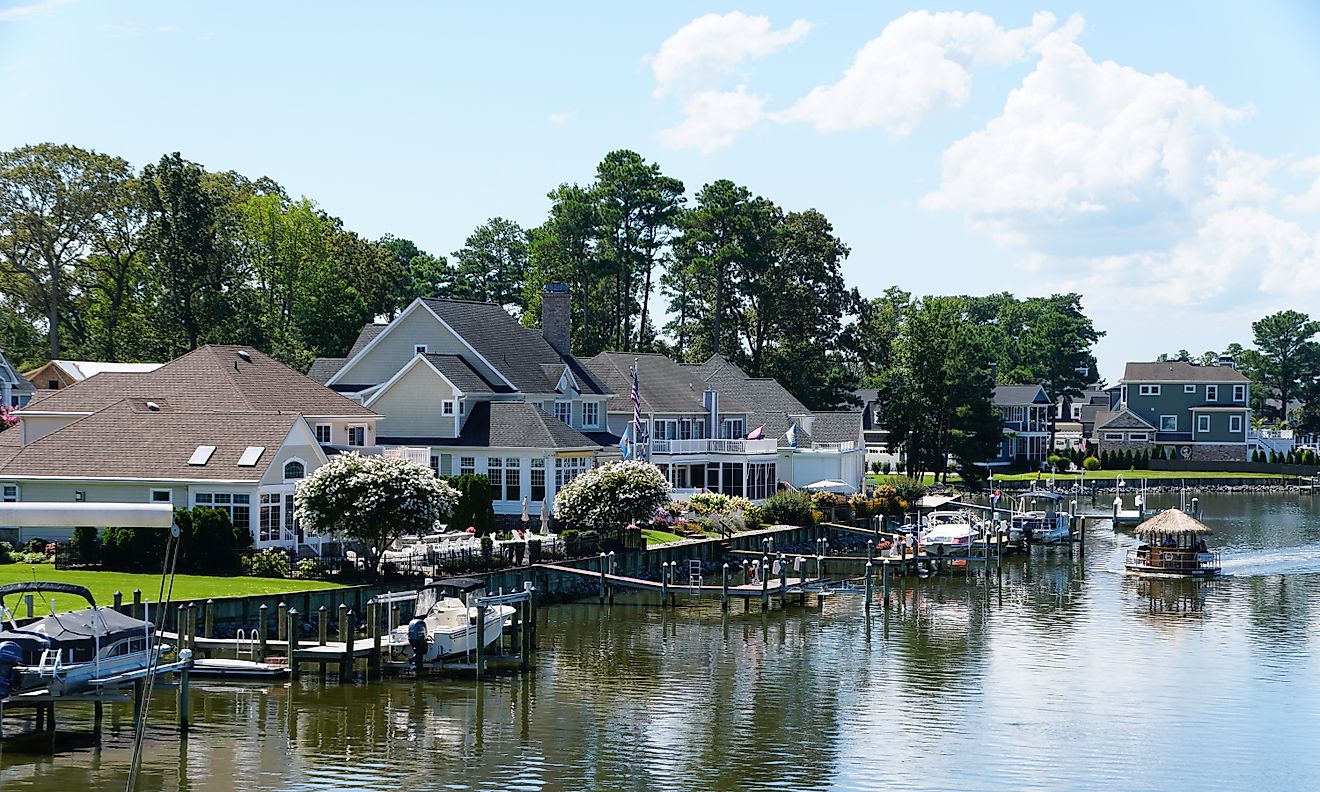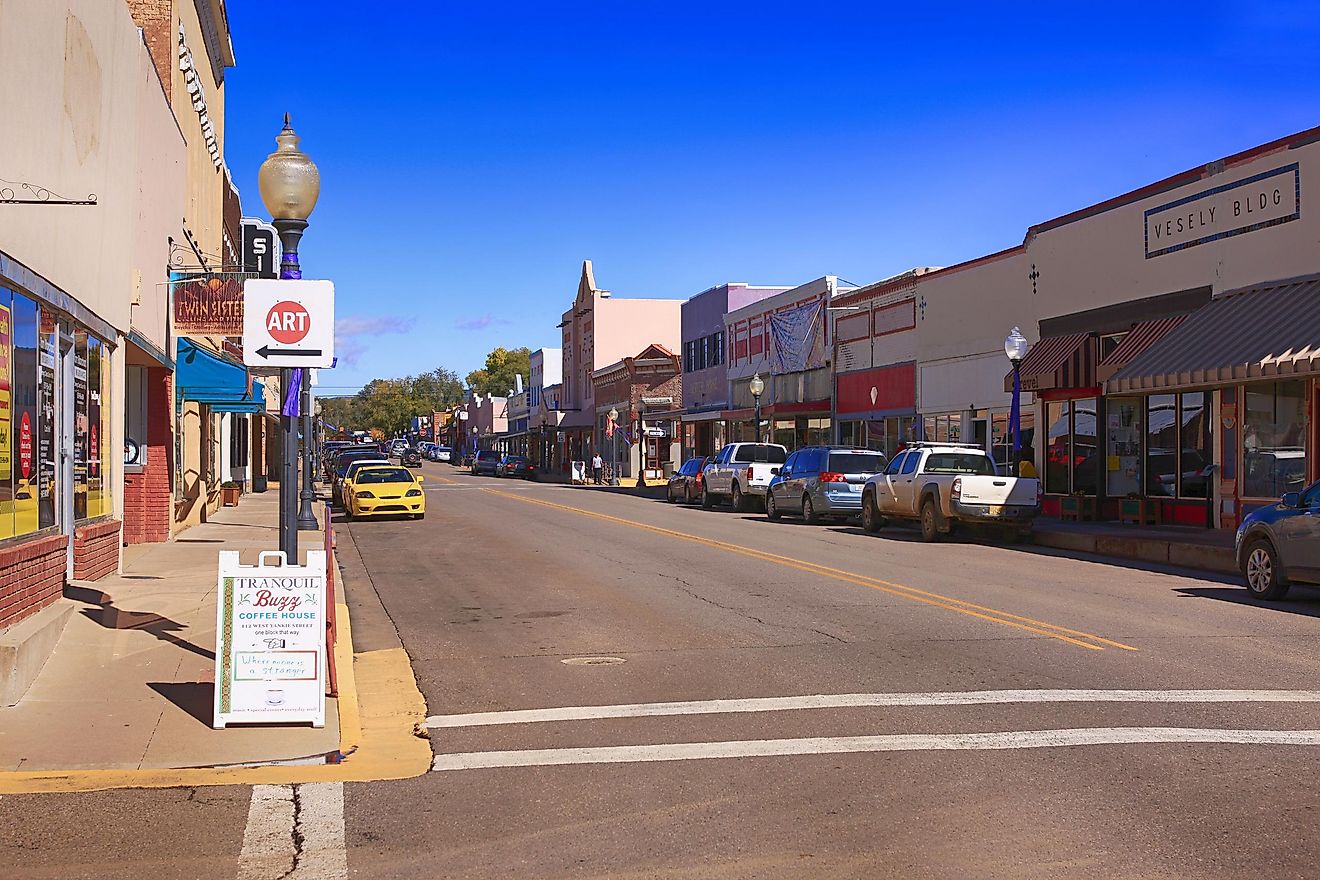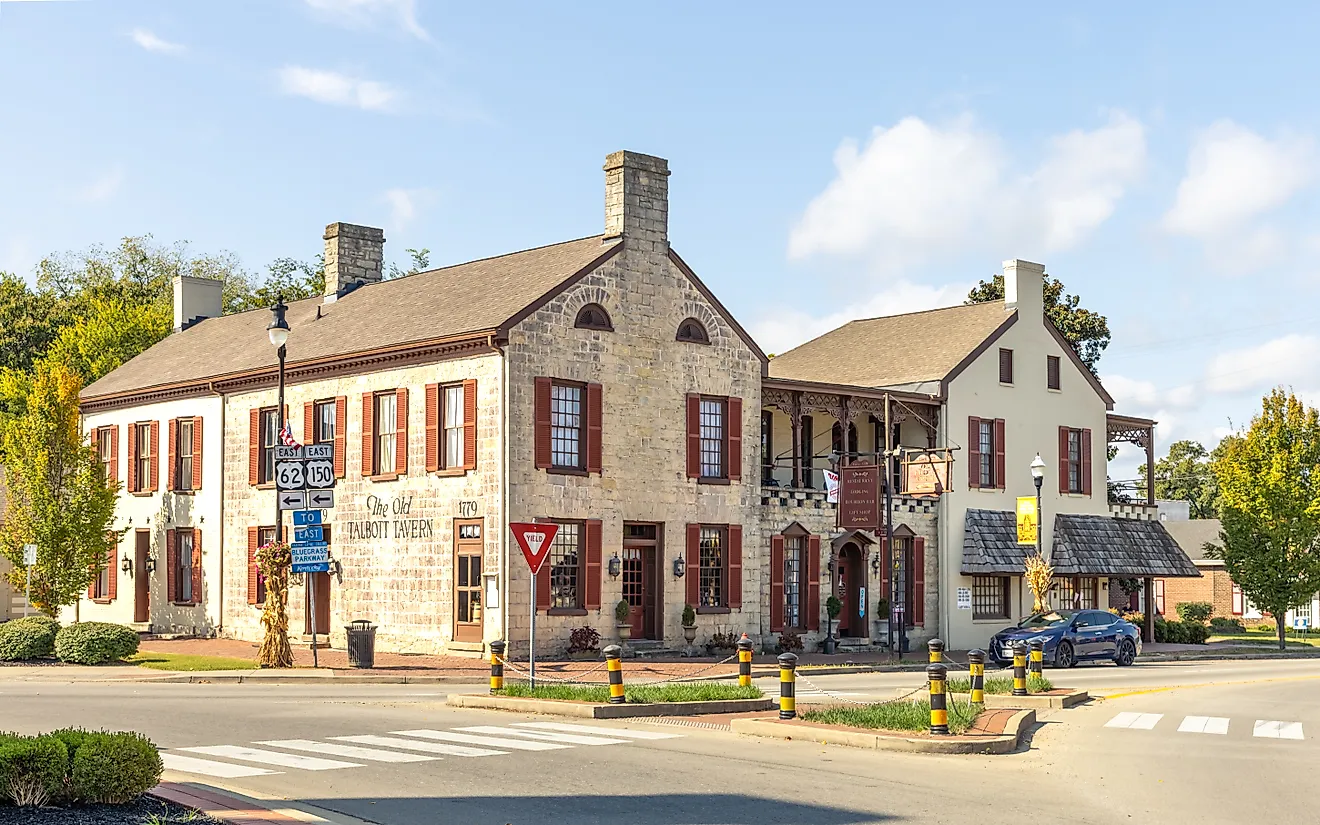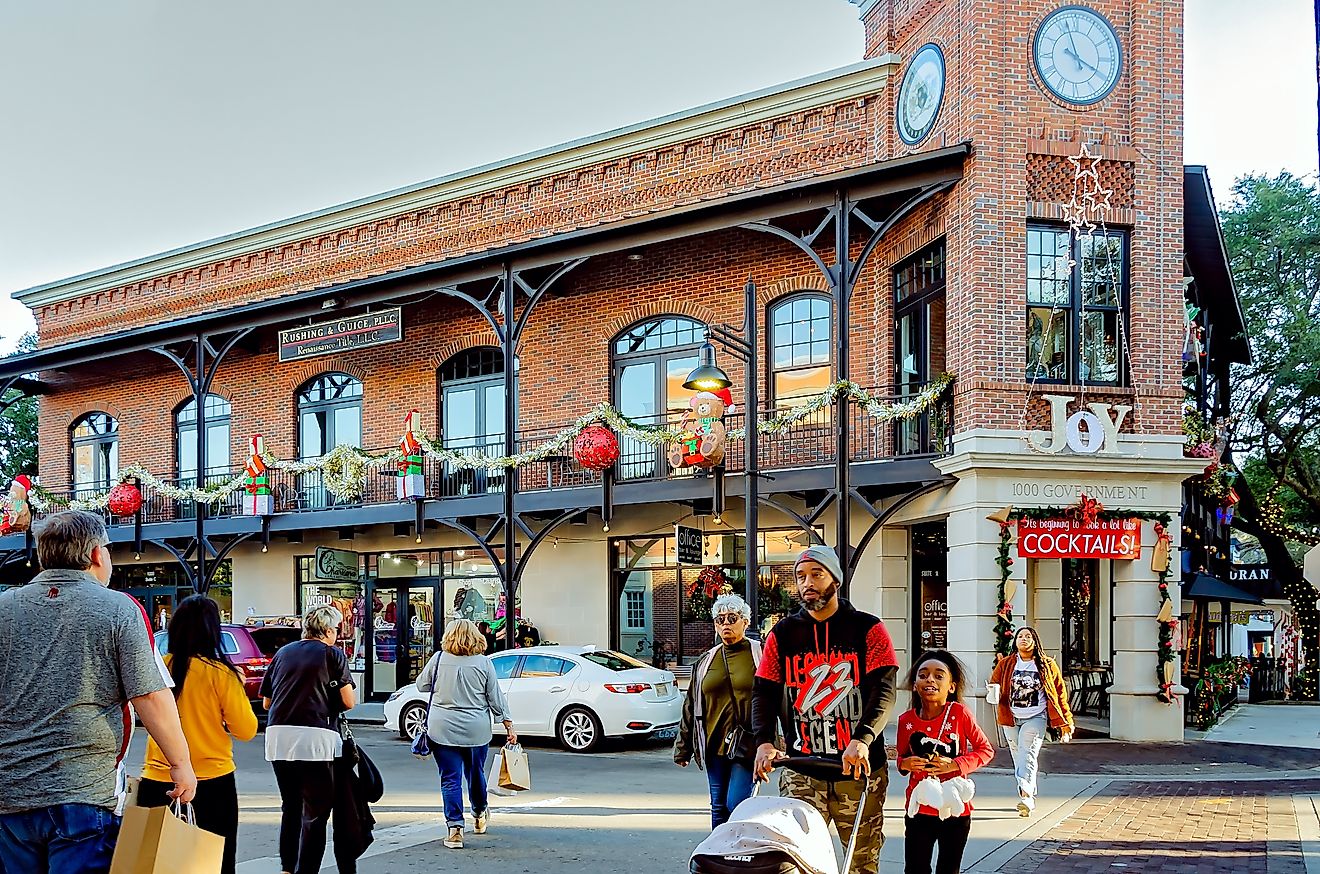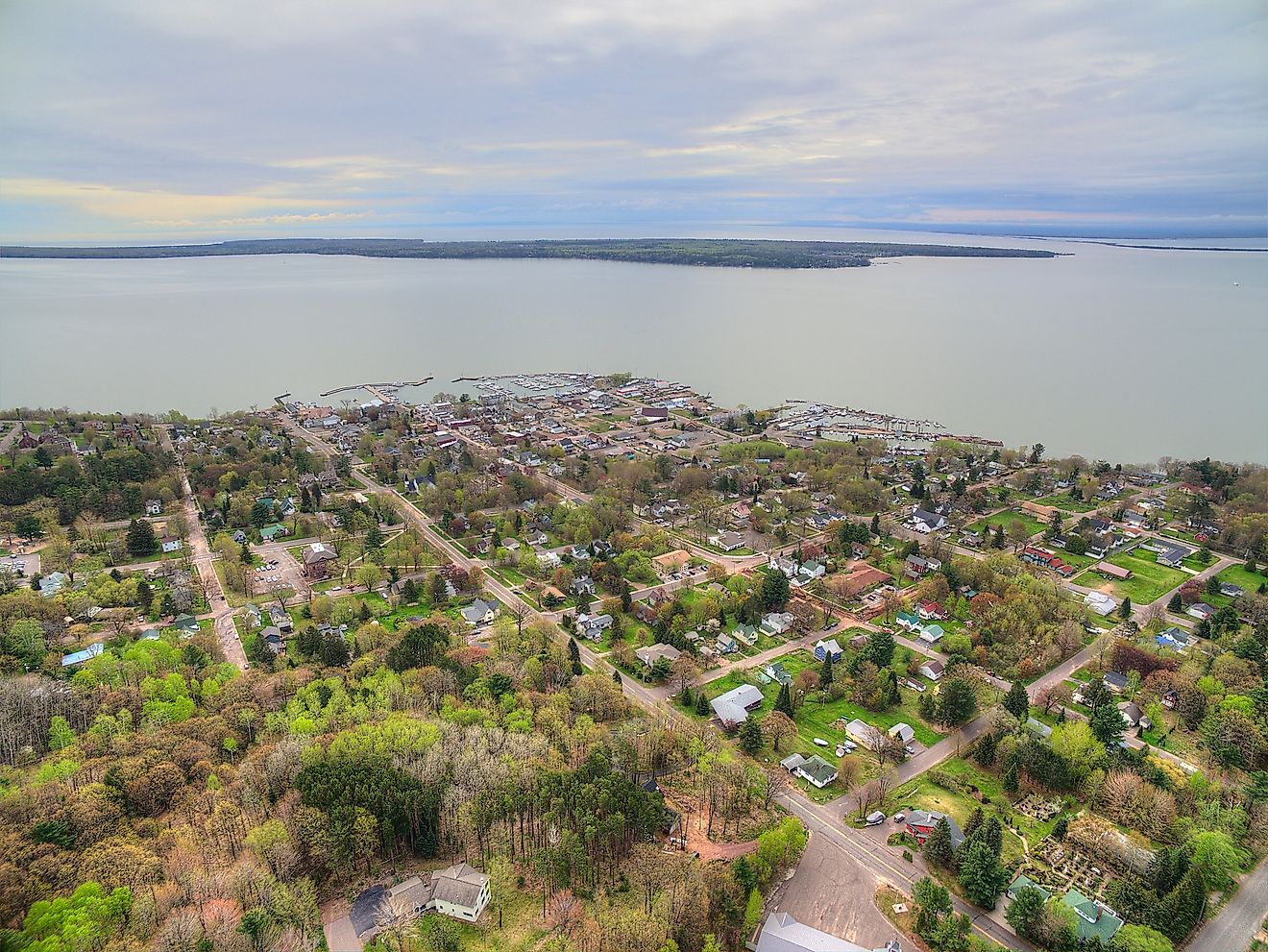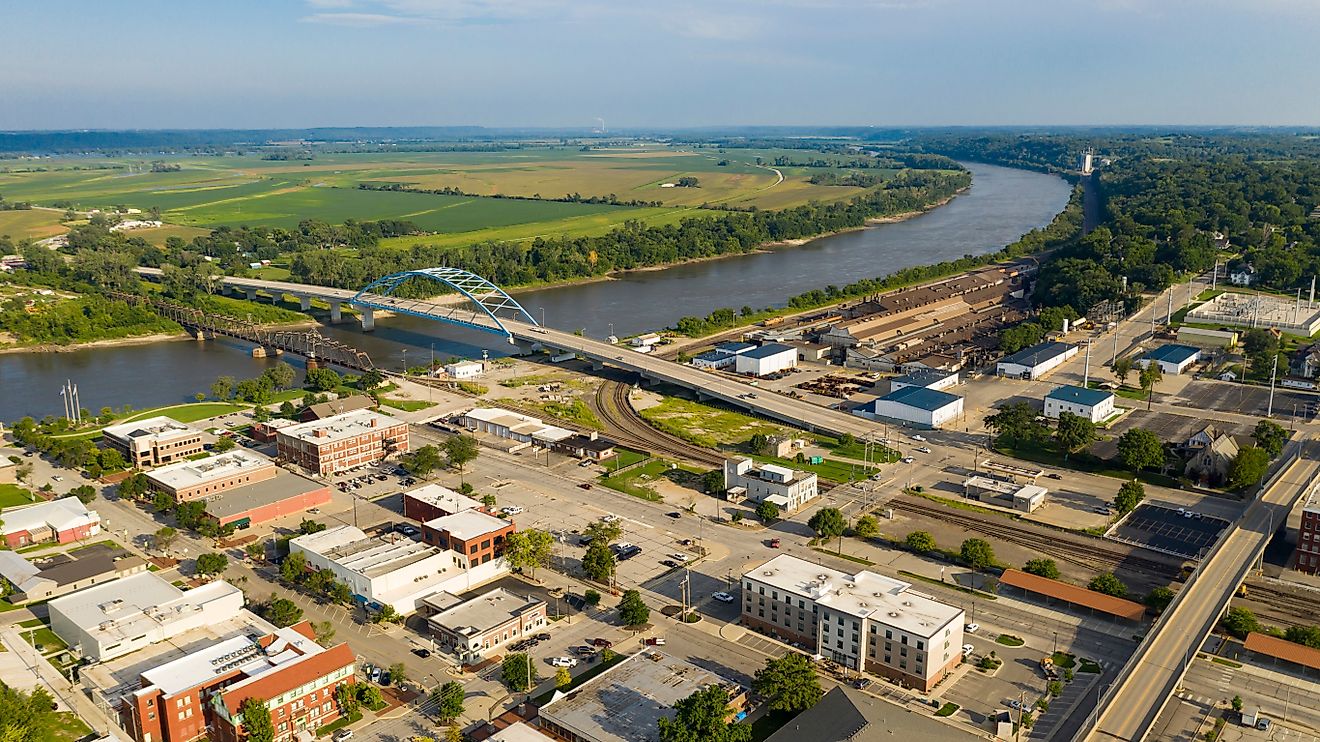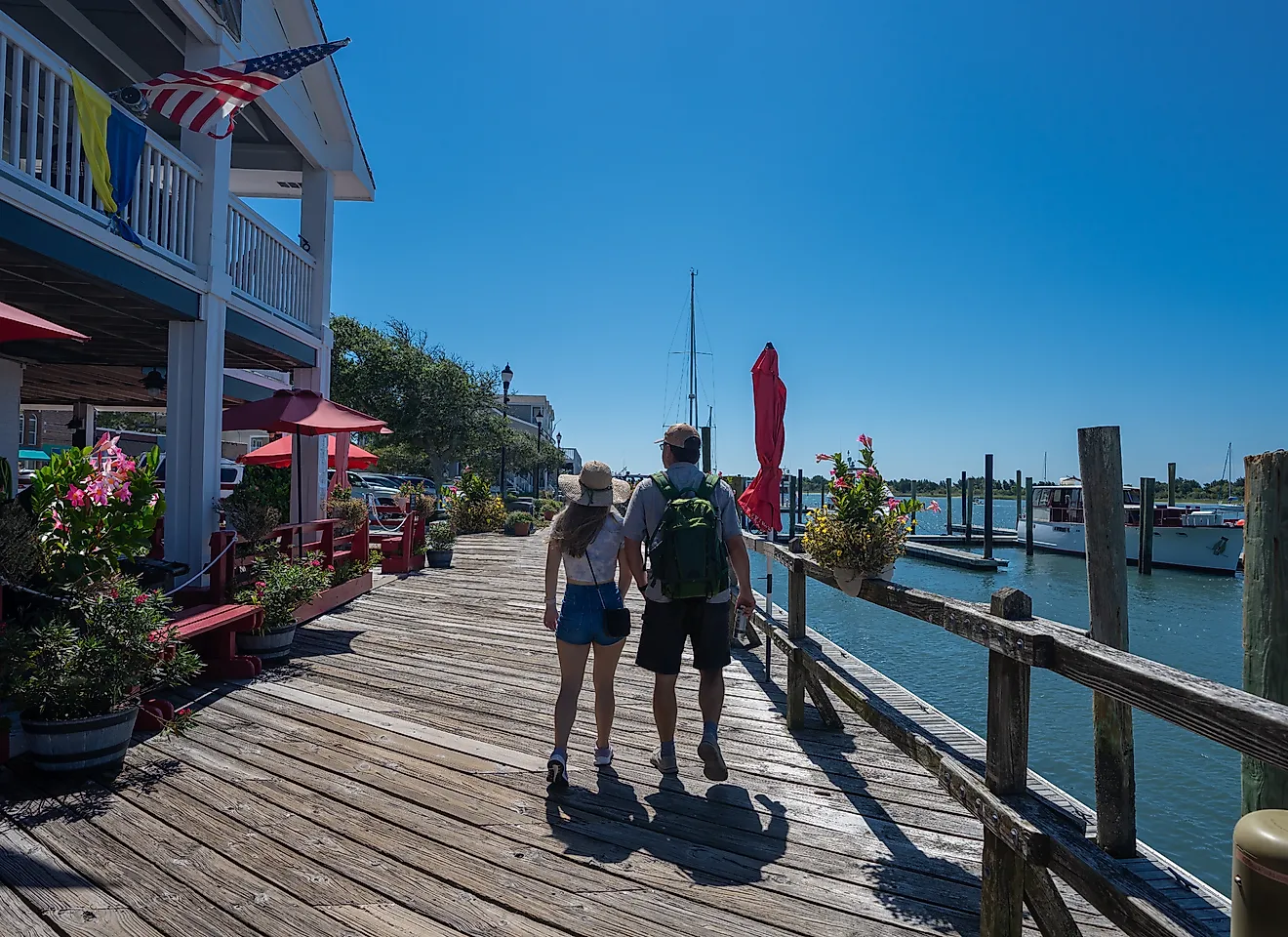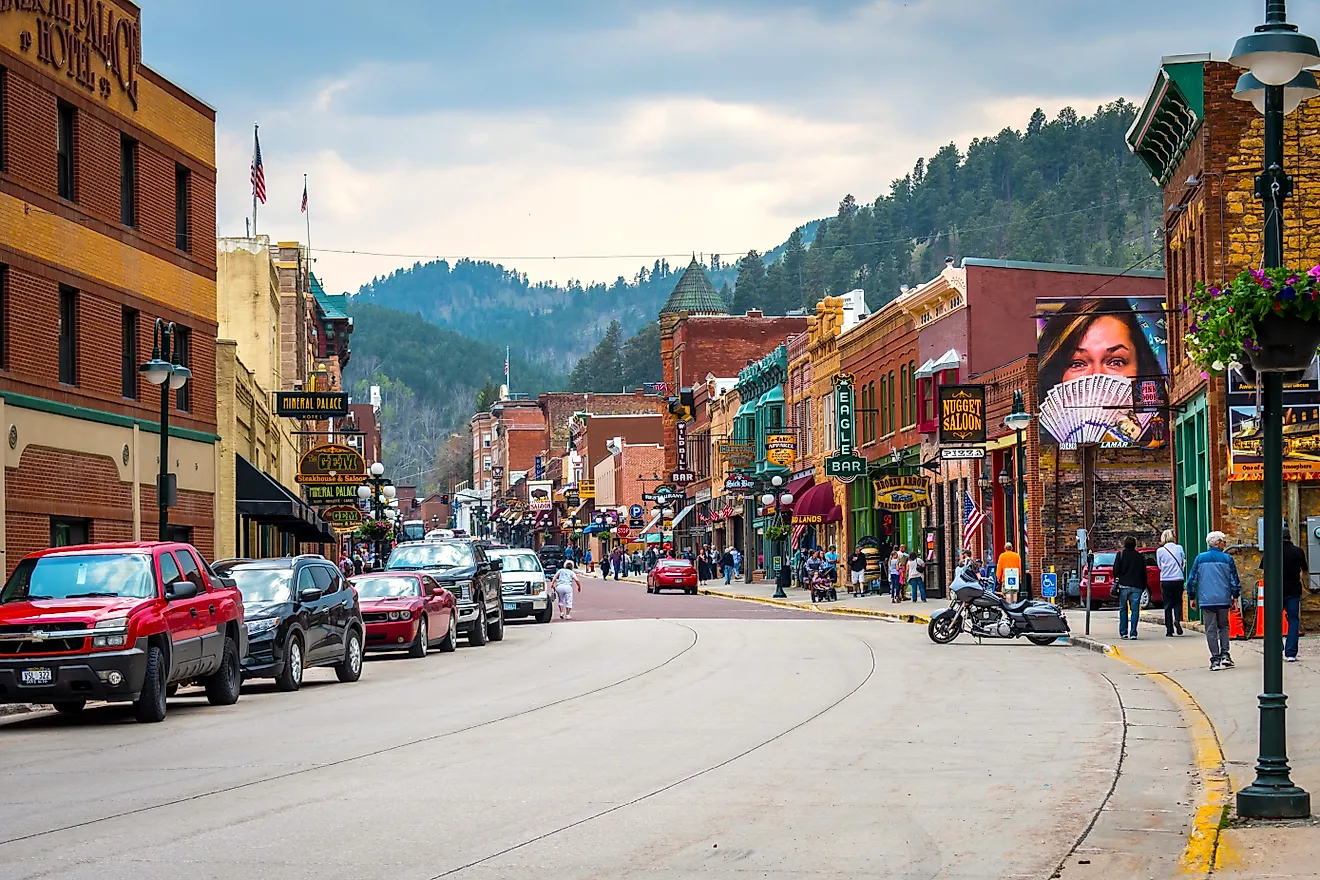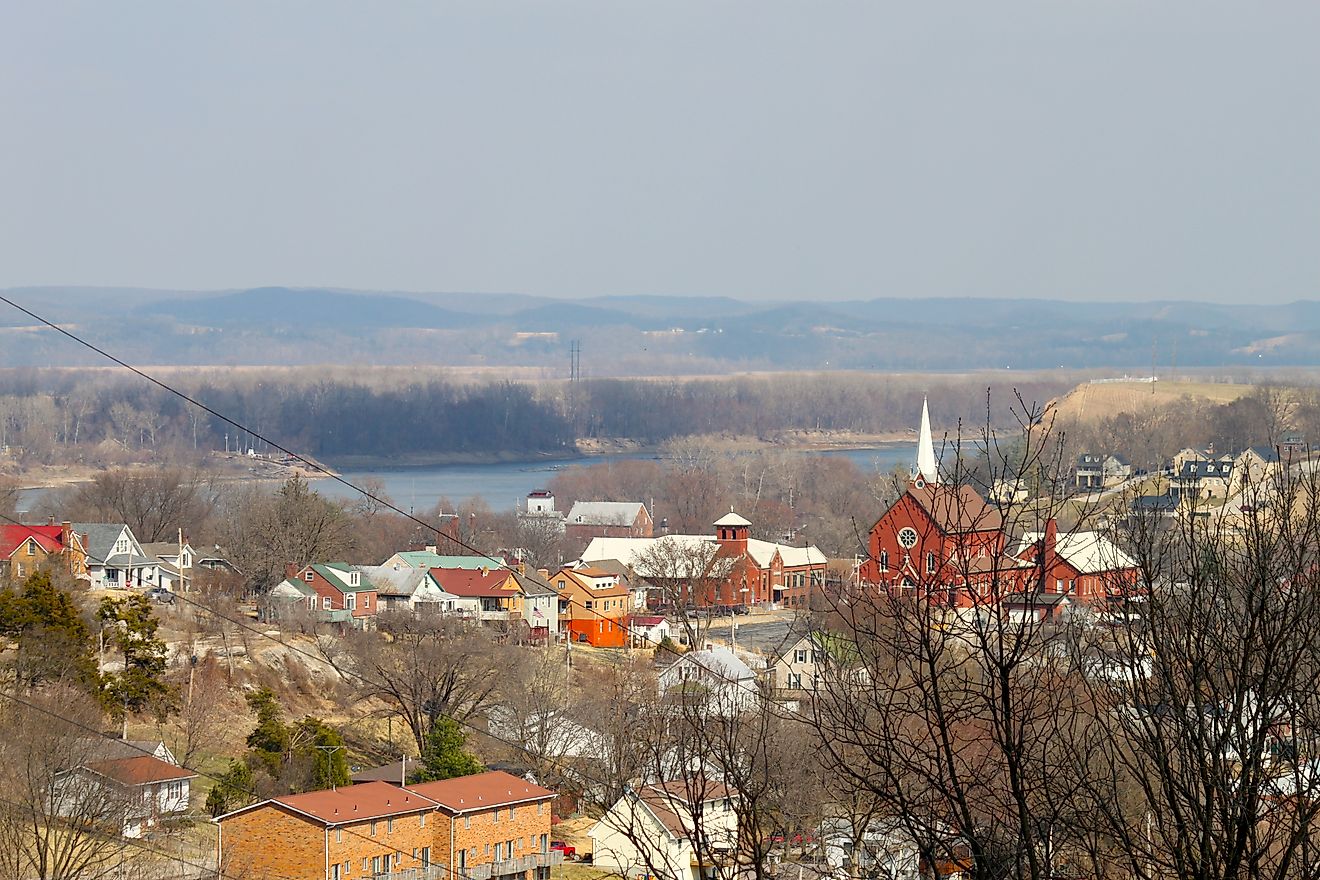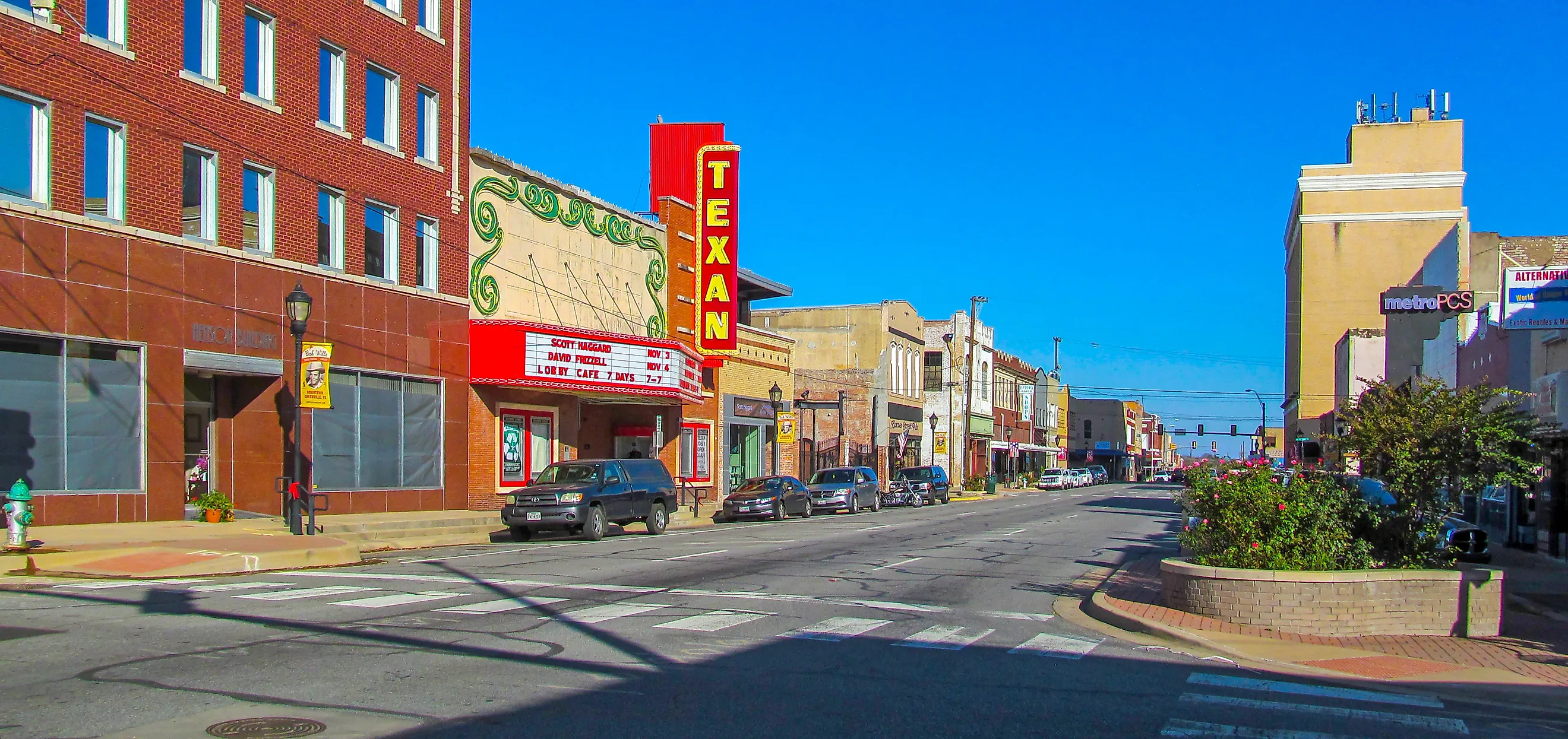
11 Best Towns In Texas For Retirees
Everything’s bigger in Texas, except the price tag in the right zip codes. From kolache country to pecan country, these places trade high-gloss hype for the quiet math of livability.
Here’s the twist: we’re not chasing boomtowns or resort mirages. We’re hunting for steady pulses, college hamlets, courthouse squares, river bends, and lake edges, where a weekday can still be organized around coffee at a family-run café, a museum with real local provenance, or a park you’ll actually use. The 11 towns ahead don’t read like a Texas cliché reel; they’re a working map for a retirement that values routine over spectacle, neighbors over noise, and a good clinic over a fancy skyline.
Seguin
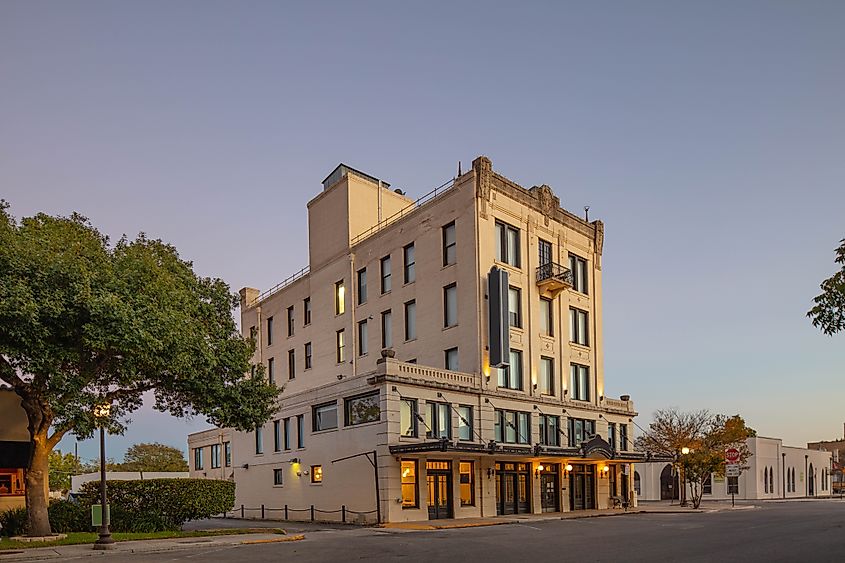
Seguin stands out for having one of the largest collections of concrete structures in the United States, a legacy of early 20th-century builder Dr. W.F. Heinsohn, who championed fireproof concrete homes long before it was common. The town’s heritage is anchored by the Guadalupe River, which cuts through the city and feeds the shaded waters of Max Starcke Park, a Depression-era public works gem with a riverside walking trail and a surprisingly challenging nine-hole golf course. In town, the Sebastopol House Historic Site is a striking, preserved Greek Revival home built entirely of limecrete. Its walls still stand over 150 years later, a testament to local craftsmanship. For a quiet afternoon, the Seguin Public Library’s award-winning modern design offers a peaceful reading space with floor-to-ceiling river views.
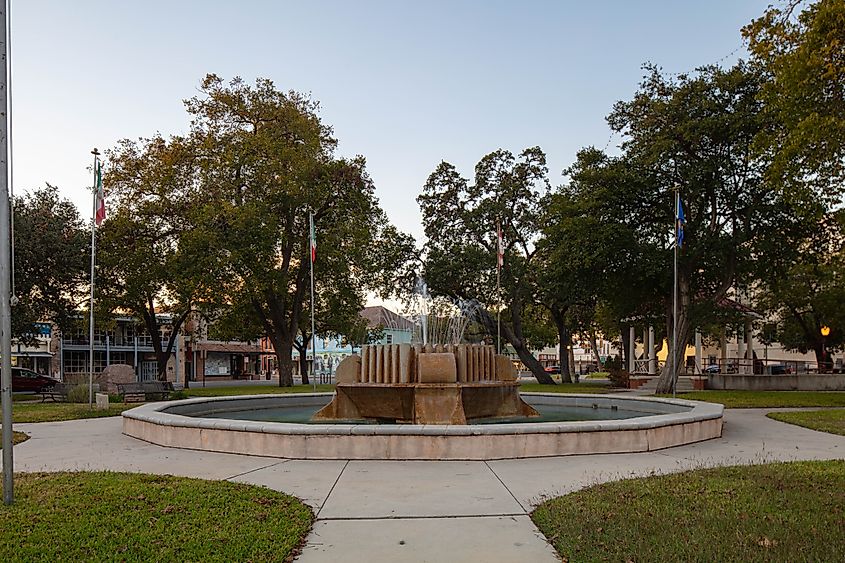
The median home price in Seguin is around $247,000, comfortably below the Texas state average. Medical care is covered by Guadalupe Regional Medical Center, a full-service hospital with a 24-hour emergency department and a growing reputation for heart and orthopedic care. Retirement communities include Argent Court, which offers assisted living with private apartments and dining options near the city center.
Nacogdoches
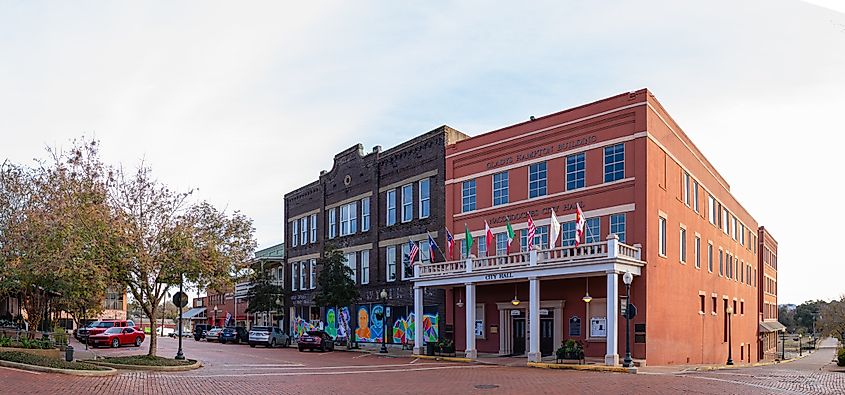
Nacogdoches is the oldest town in Texas, with roots dating back to a Spanish mission founded in 1716, but its deeper identity comes from layers of Indigenous, Mexican, and early American history that still shape its downtown architecture and layout. The town’s brick-paved main streets run through a compact historic district with low-rise buildings, antique stores, and coffeehouses like Java Jacks that sit comfortably in century-old storefronts. The Sterne-Hoya House Museum offers a direct glimpse into early 1800s life, and the Ruby M. Mize Azalea Garden inside the Stephen F. Austin State University arboretum features more than 7,000 azaleas, best seen mid-March. Trails behind the visitor center lead into LaNana Creek, a wooded path used for casual walking and birdwatching.
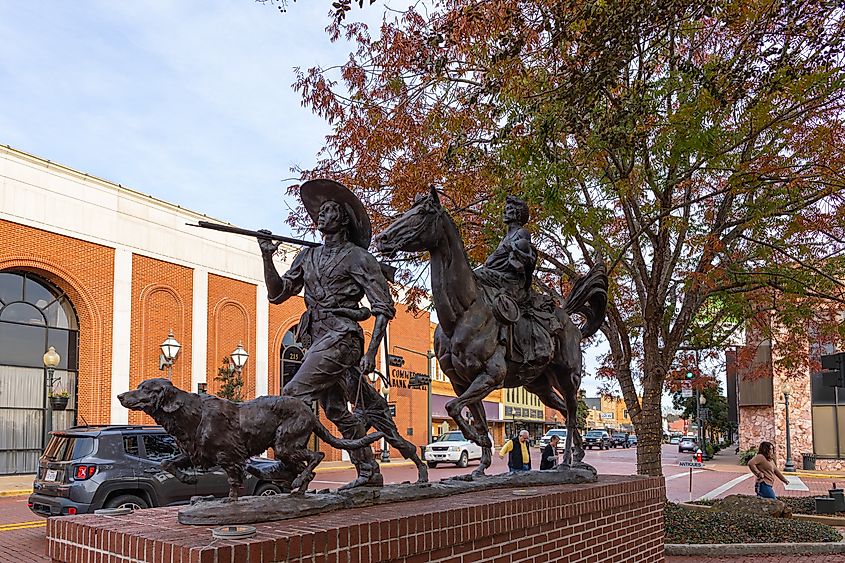
The typical home in Nacogdoches sells for around $192,000, significantly lower than the Texas average. Medical services are provided by Nacogdoches Memorial Hospital, a full-service center with cardiology, imaging, and outpatient care. The Arbor Assisted Living offers retirement and senior living just minutes from the university district.
Huntsville
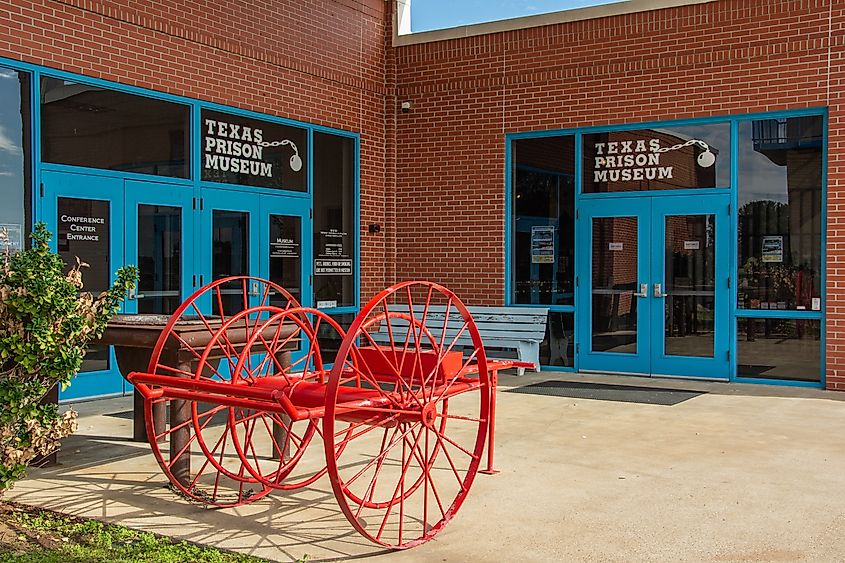
Huntsville is the burial place of Sam Houston, but what sets the town apart is how thoroughly his legacy is embedded in its identity, from the 67-foot-tall statue towering over I-45 to the museum complex that includes his Woodland Home and law office. The town balances historic reverence with function: the Sam Houston Memorial Museum sits on a tree-covered campus used for walking, picnicking, and outdoor classes. Huntsville’s location along the Pineywoods gives it access to Huntsville State Park, where Lake Raven allows flatwater paddling and catch-and-release fishing year-round. The Texas Prison Museum, which holds the electric chair known as “Old Sparky,” draws visitors interested in the state’s carceral past.
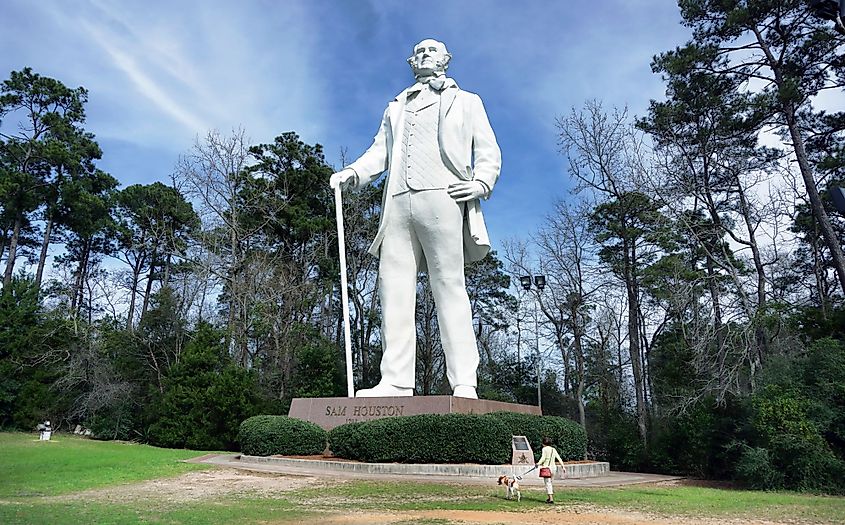
The average home in Huntsville is worth approximately $259,000, slightly below the Texas median. Huntsville Memorial Hospital is the primary regional provider, offering surgical, cardiac, and rehabilitation services. Creekside Retirement Community, located off Highway 30, provides assisted living with access to shopping centers and pharmacies within a short radius. Farmhouse Café on University Avenue serves Southern-style lunch plates popular with retirees and faculty from nearby Sam Houston State University.
Lufkin
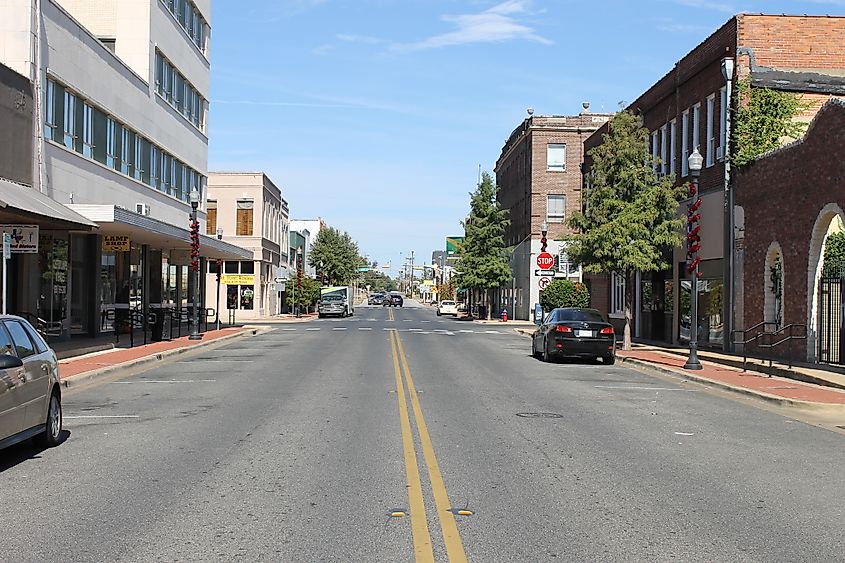
Lufkin developed as a sawmill town at the crossroads of the cotton belt and the timber-rich East Texas forests, but its legacy lies in its role as the longtime headquarters of Southland Paper Mills, the first newsprint plant in the U.S. to use southern pine. That industrial past is preserved in the Texas Forestry Museum, which includes a logging train, diorama room, and a small nature trail behind the exhibits. Nearby, the Ellen Trout Zoo operates inside a wooded lakeside park and features giraffes, white rhinos, and a narrow-gauge train that loops the grounds. The Museum of East Texas, located inside a former church, hosts traveling exhibits and maintains a permanent collection of regional paintings and sculpture.
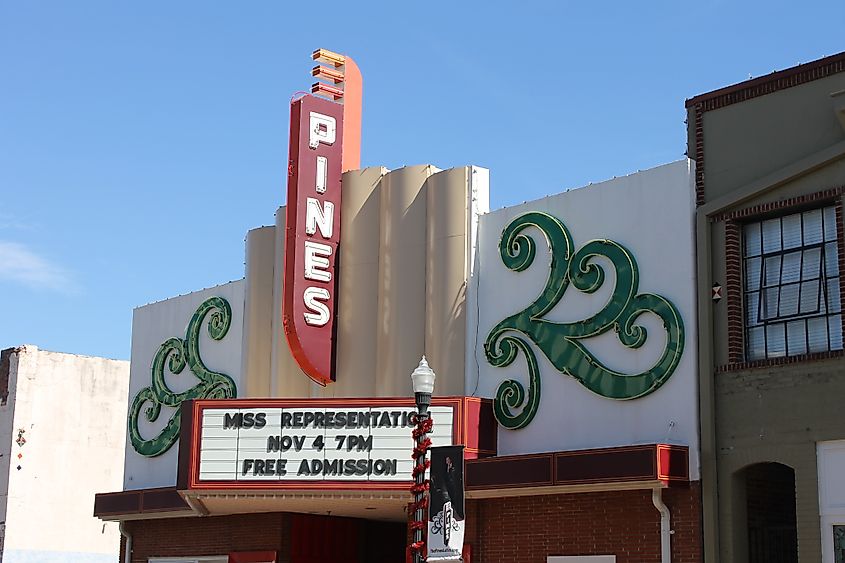
The usual home value in Lufkin is approximately $196,000, which is lower than the statewide average. St. Luke’s Health-Memorial Lufkin offers complete hospital services, including a Heart & Stroke Center and extensive rehab facilities. PineCrest Retirement Community provides both independent living and skilled nursing care on a campus near the southern part of town.
Sherman
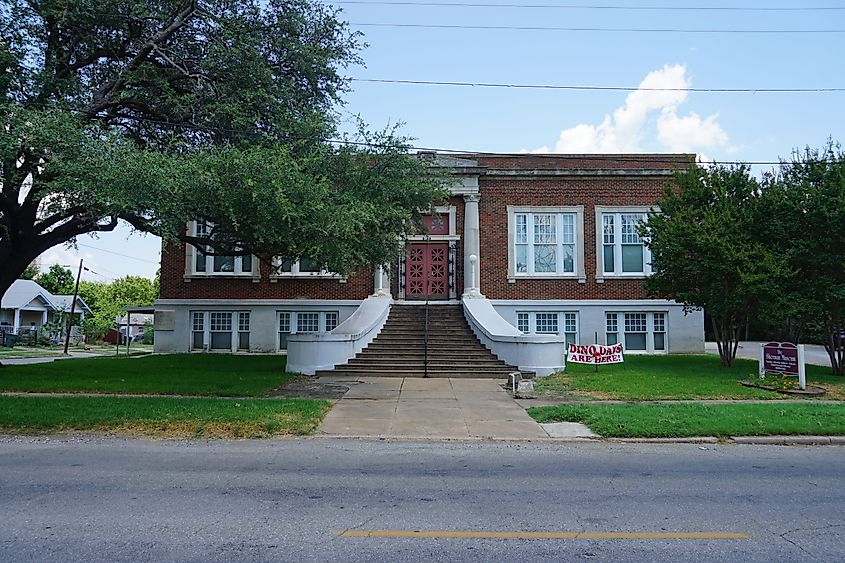
Sherman sits fifteen miles south of the Oklahoma border and grew around a now-vanished railway junction, but its enduring identity is shaped by Austin College, one of the oldest colleges in Texas, chartered in 1849. That presence gives Sherman a steady cultural anchor. Its downtown has been steadily rebuilt following multiple 19th-century fires and includes preserved façades now housing places like Old Iron Post, a bar and grill with live jazz nights, and Sage Café, a breakfast spot known for oatmeal pancakes and coffee roasted in nearby Denison. The Sherman Jazz Museum, housed inside a former Masonic lodge, holds rare recordings, trumpets, and sheet music from local collector Bill Collins’s private archive. Ten miles west, Hagerman National Wildlife Refuge draws birders with spring migrations and accessible observation decks along Lake Texoma.
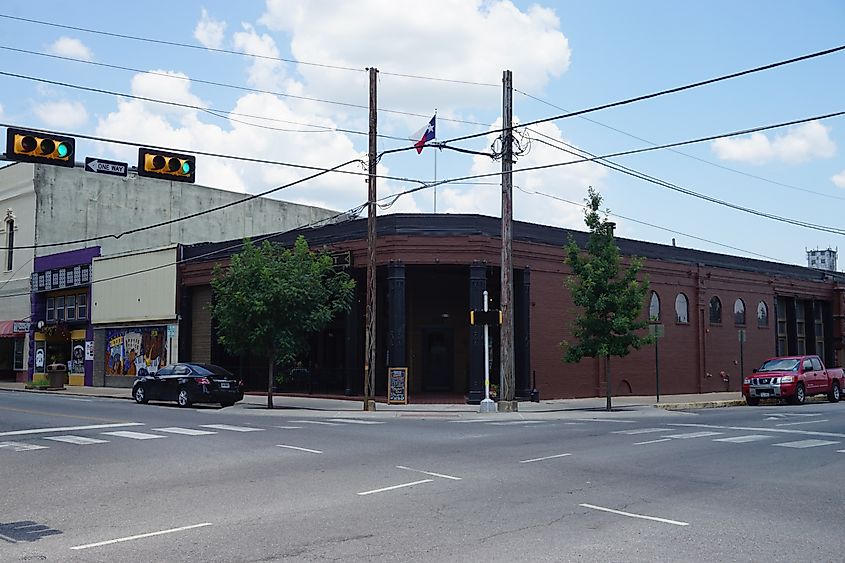
Sherman’s median home price is roughly $263,000, still under the Texas median. Wilson N. Jones Regional Medical Center provides emergency care, cardiology, and rehabilitation services from its North Highland campus. Pecan Point Assisted Living, located on Heritage Parkway, offers senior apartments with on-site nursing and memory care. Sherman is stable, self-contained, and large enough to offer services without urban sprawl, giving retirees a close-knit grid with direct routes to healthcare, parks, and civic activity.
Greenville
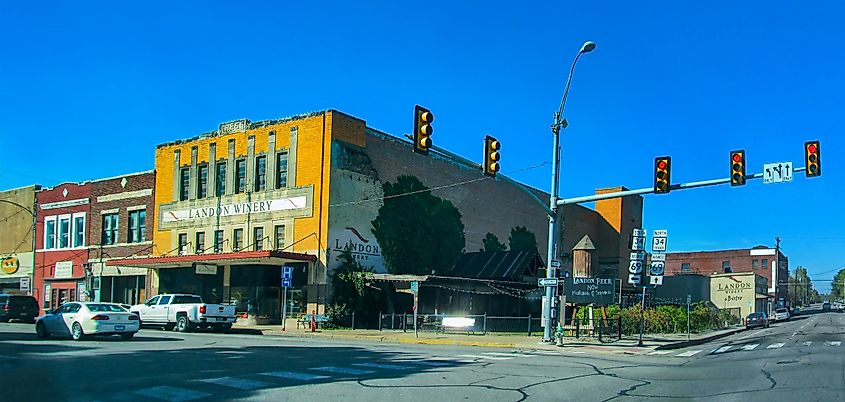
Greenville once marketed itself as “The Cotton Capital of the World,” and remnants of that agricultural prominence remain visible in the red-brick grain silos and preserved buildings around Washington Street. The Audie Murphy/American Cotton Museum combines military memorabilia with textile history and sits next to the oldest cemetery in Hunt County. The Texan Theater, a restored 1940s venue downtown, now hosts film nights, live shows, and lecture series with assigned seating and full dinner service. Landon Winery, located across the square, produces dry reds from Texas grapes and maintains a shaded courtyard that stays active through fall. Retirees frequently walk the open fields along the Northeast Texas Trail, which passes through the northern edge of the city on its way toward Paris, Texas.
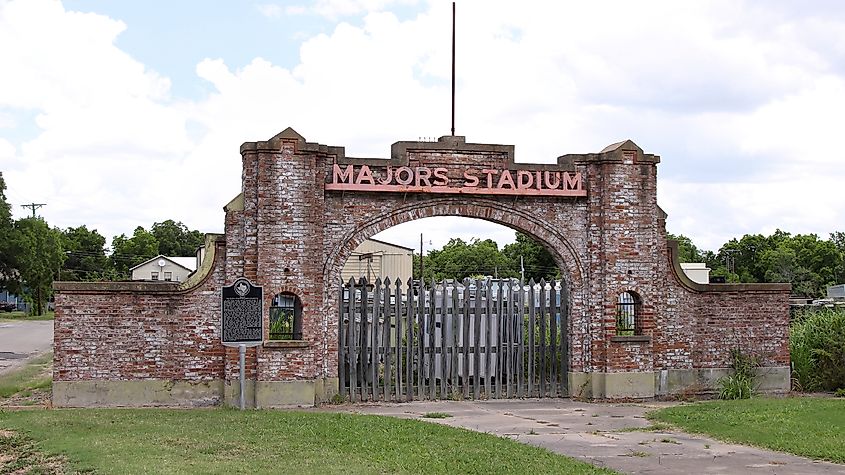
The typical home price in Greenville is about $245,000, which stays below the state average. Hunt Regional Medical Center provides inpatient care, emergency services, and specialty diagnostics from a facility off Joe Ramsey Boulevard. Colonial Lodge Assisted Living offers a mix of independent and semi-assisted apartments just west of downtown, within two miles of both the library and hospital.
Sulphur Springs

Sulphur Springs rebranded itself by installing the only known public glass restrooms in the U.S., mirrored on the outside and fully private within, right on the courthouse square. That mix of novelty and order defines the town’s core. The restored Hopkins County Courthouse, built in 1895, anchors a district that includes coffee from Rooster’s, lunch at Plain & Fancy Sandwich Shoppe, and seasonal events like the stew cook-off and holiday lighting ceremony. The Southwest Dairy Museum, funded by a national milk promotion board, houses working equipment, butter churn demos, and a functioning ice cream parlor. One mile south, Heritage Park displays a schoolhouse, chapel, and print shop preserved from the early 1900s and staffed by volunteers with long family ties to the area.
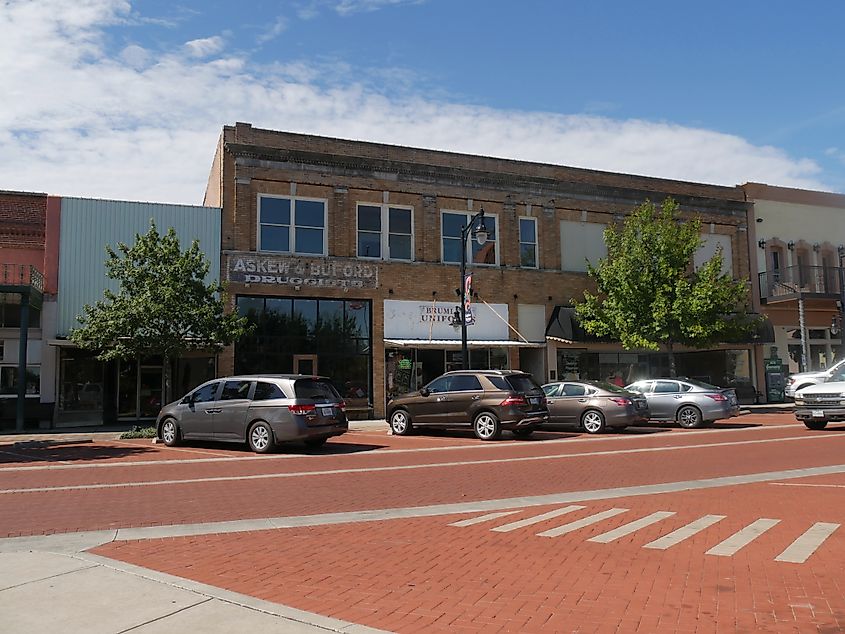
On average, a home in Sulphur Springs costs around $250,000, keeping it below the statewide median. CHRISTUS Mother Frances Hospital - Sulphur Springs provides full emergency and inpatient services and is located near the Civic Center Complex. Wesley House Assisted Living offers memory care and independent apartments on Country Club Road.
Athens
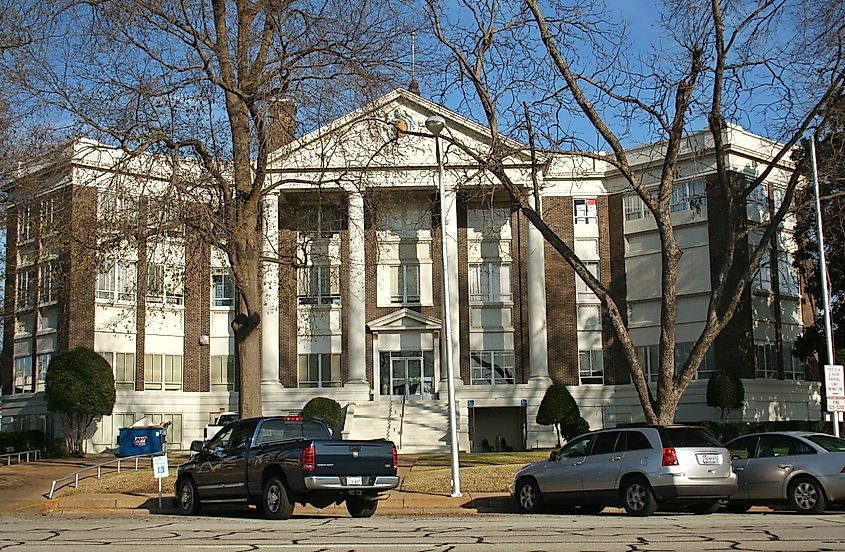
Athens claims to be the original home of the hamburger, a title it backs with a 1904 World's Fair origin story tied to local resident Fletcher Davis. That detail sits alongside the town’s identity as a freshwater fishing hub, Lake Athens supports year-round angling and lies just east of the city center, adjacent to the Texas Freshwater Fisheries Center. The center, though temporarily closed, houses stocked ponds, walking trails, and hatchery exhibits and remains central to local conservation efforts. The East Texas Arboretum spans over 100 acres of woods, bridges, and gardens on the northwest edge of town. On the courthouse square, Railway Café serves grilled trout and sweet potato hash in a two-room space with rotating artwork by local painters.
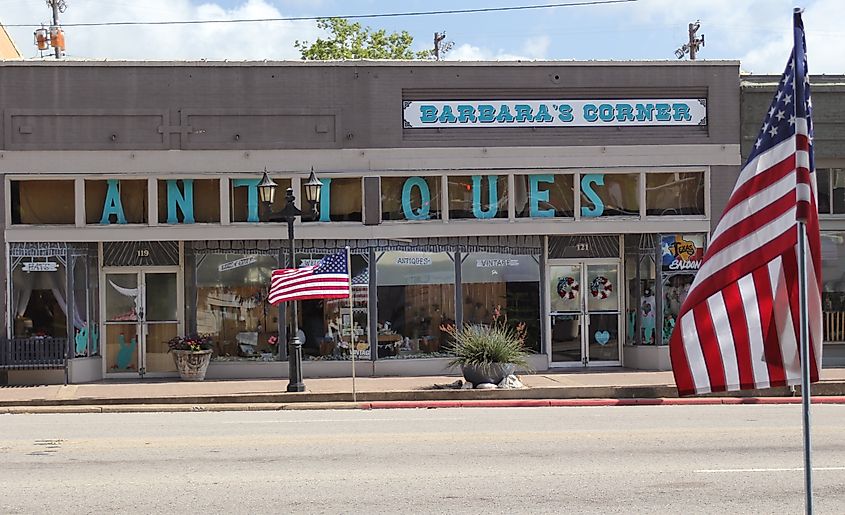
A home in Athens is valued at around $253,000, slightly under the Texas median. UT Health East Texas - Athens operates a full-service hospital on Tyler Street with surgical, imaging, and rehab services. Arabella of Athens, located along Gibson Road, offers assisted living and memory care suites in a landscaped setting.
Weslaco
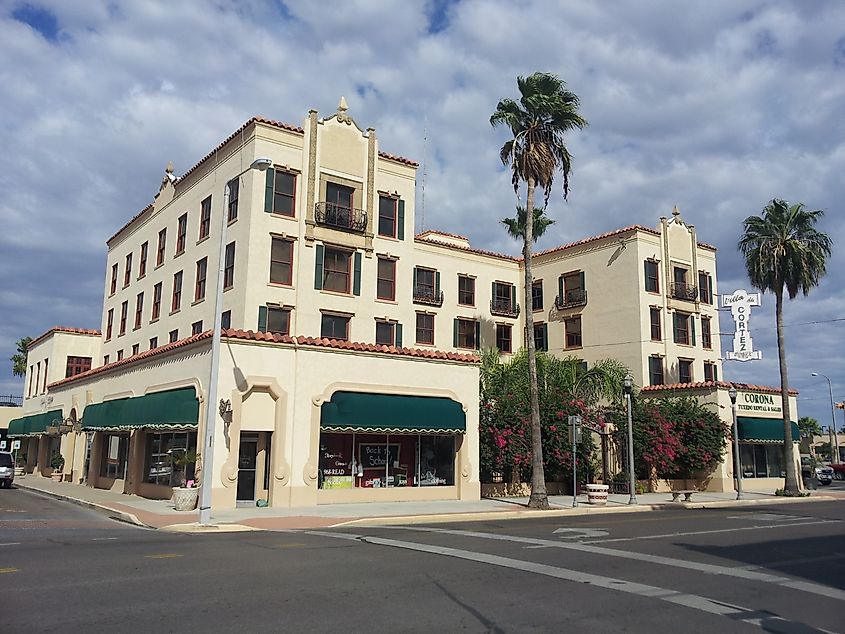
Weslaco sits at the center of the Rio Grande Valley and serves as a major migratory bird corridor, more than 300 species pass through the region annually. The Valley Nature Center, located on South Border Avenue, maintains six acres of native Tamaulipan thornscrub and provides walking trails with shaded benches, educational programs, and active hummingbird feeders. Less than two miles south, Estero Llano Grande State Park spans wetlands, lakes, and boardwalks, drawing birders during both spring and fall flyovers. Downtown Weslaco features 1920s-era buildings now used for taquerias, barbershops, and bakeries. Café 5 on Texas Boulevard draws a steady lunch crowd with chicken mole, caldo, and rotating daily plates.
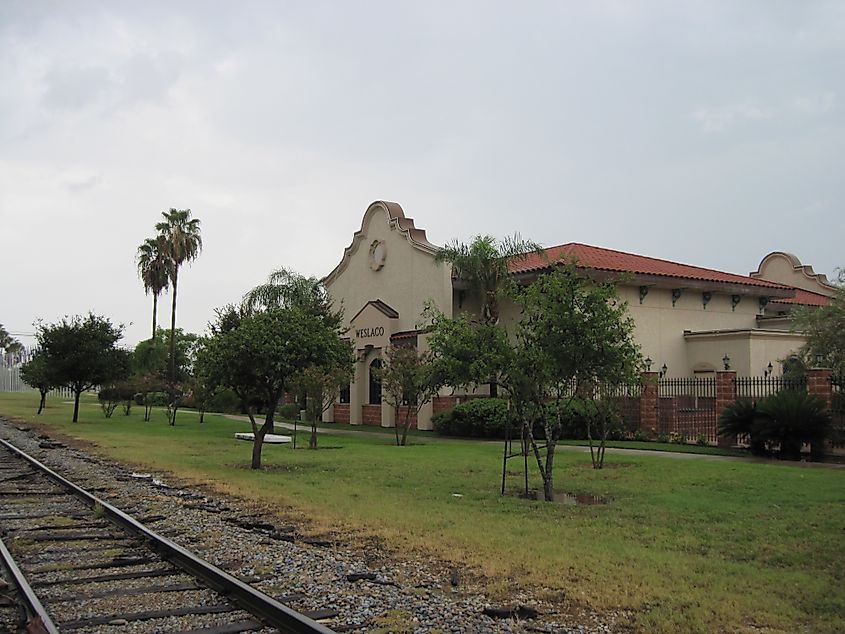
The median home price in Weslaco is about $175,000, well below the state average. Knapp Medical Center, a 227-bed hospital with full emergency and surgical services, anchors the city’s healthcare infrastructure. John Knox Village offers assisted living apartments and home-style meals within walking distance of shopping plazas. The street grid is flat, tree-lined, and built for small-parcel access, giving retirees consistent routes to parks, groceries, and care.
Corsicana
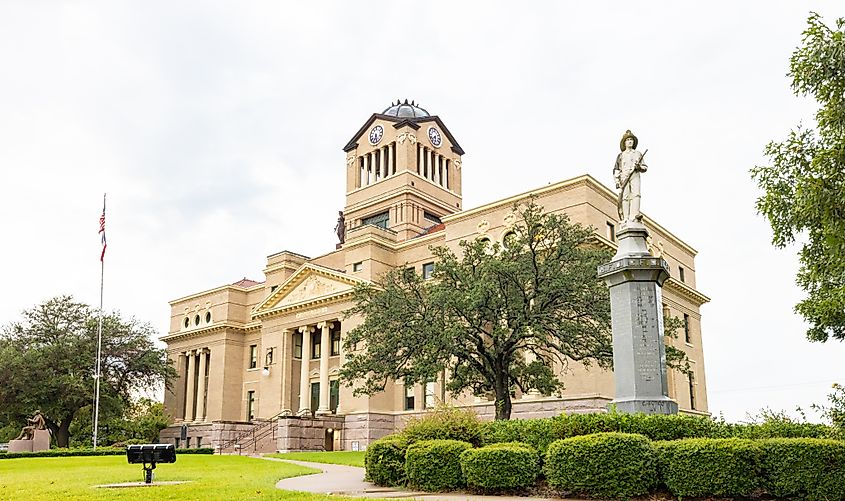
Corsicana was the first city in Texas to strike oil west of the Mississippi, but its greater legacy comes from Collin Street Bakery, which began exporting fruitcakes worldwide in the early 1900s and still runs a storefront and shipping center off Seventh Avenue. The downtown grid includes restored theaters, antique shops, and Mita’s Coffee Lab, known for cold brews, matcha, and tables that face the Navarro County Courthouse. Two blocks north, the Pearce Museum inside Navarro College holds Civil War letters and a Western art collection that includes oil paintings and bronze works by Charles M. Russell. Pioneer Village, on the east side of town, includes relocated 19th-century cabins and a working blacksmith shop maintained by volunteers.
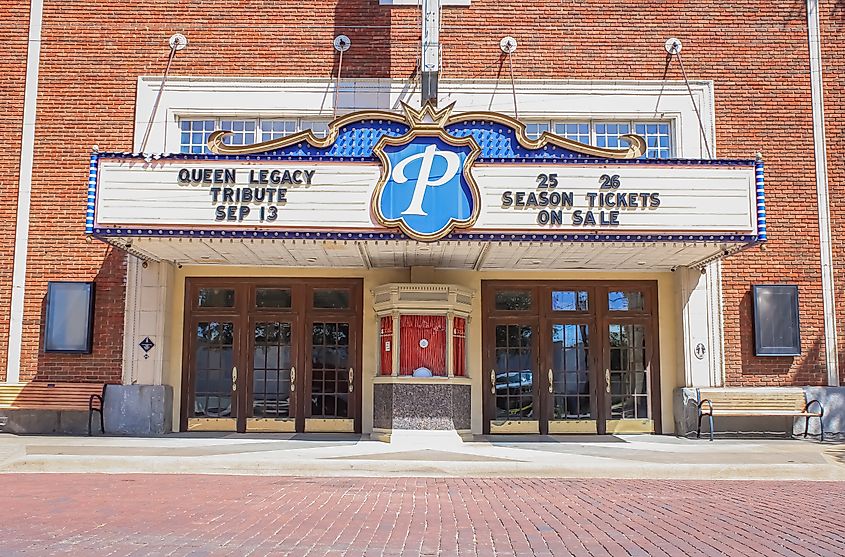
In Corsicana, the typical home price is quite affordable at around $172,000, making it one of the lowest in the region. Navarro Regional Hospital provides caring inpatient and emergency services right from their convenient campus along Medical Center Drive, where you'll find access to specialists and diagnostic labs. Additionally, Heritage Oaks Retirement Village on West Park Avenue offers comfortable independent and assisted living options with friendly on-site wellness staff ready to help.
Belton
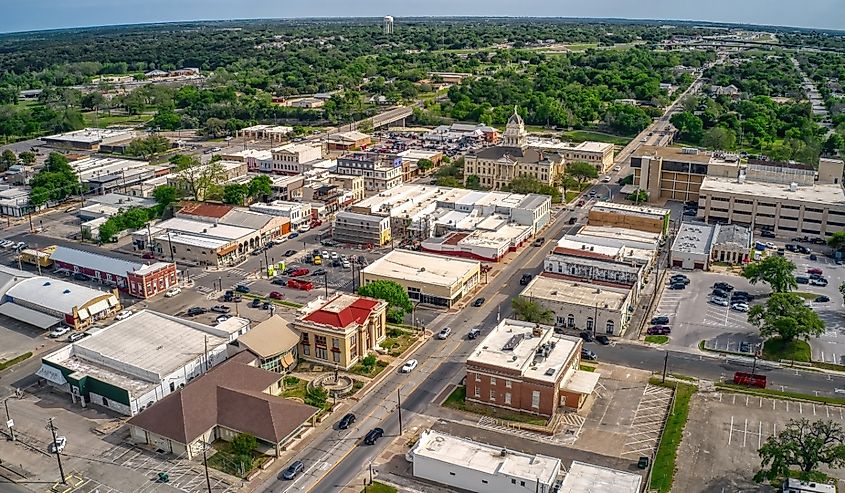
Belton’s identity has long been shaped by the presence of Belton Lake, a Corps of Engineers reservoir used for flood control, fishing, and open-water swimming. It feeds into Stillhouse Hollow Lake, whose limestone shoreline and wooded trails attract retirees for shoreline walking and birdwatching. The Bell County Museum, housed in the 1904 Carnegie Library building, holds permanent exhibits on Chisholm Trail crossings and archaeological finds from nearby Salado Creek. Belton’s downtown runs along Central Avenue and includes The Gin at Nolan Creek, a converted cotton gin complex now used for dining, walking, and creekside events. Local retirees often gather at Miller’s Smokehouse for brisket and breakfast tacos served from a counter inside a former hardware store.
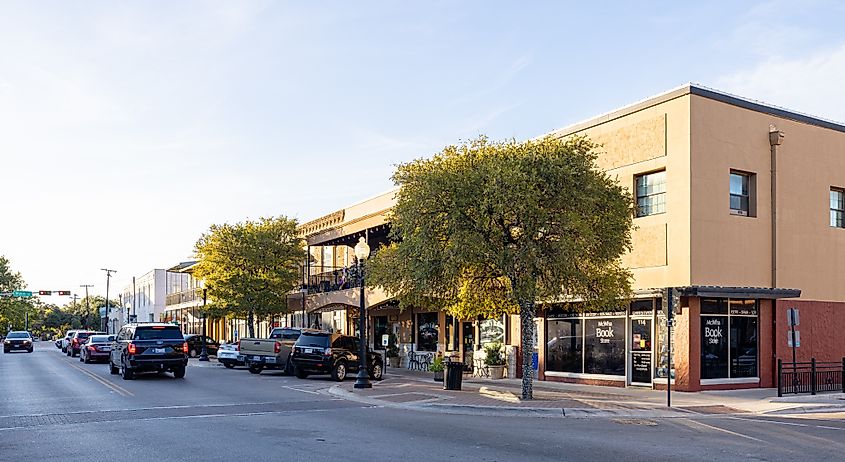
Belton’s median home price is around $317,000, which tracks near the Texas average. Full medical care is available less than 10 miles away at Baylor Scott & White Medical Center - Temple, a regional hospital and surgical center with over 600 beds. Stoney Brook of Belton, located off Loop 121, provides assisted living and memory care with landscaped courtyards and scheduled outings to local events.
Retirement in Texas doesn’t require a lottery ticket; it requires a town with structure, care, and a price that behaves. Across these 11 places, river towns, lake edges, courthouse squares, the constants hold: walkable errands, hospitals, and homes priced to keep cash flow steady. The rest is choice: garden paths or bird blinds, barbecue or bakeries, museum afternoons or loops. Pick your rhythm, not a fantasy. The math and the map agree.



